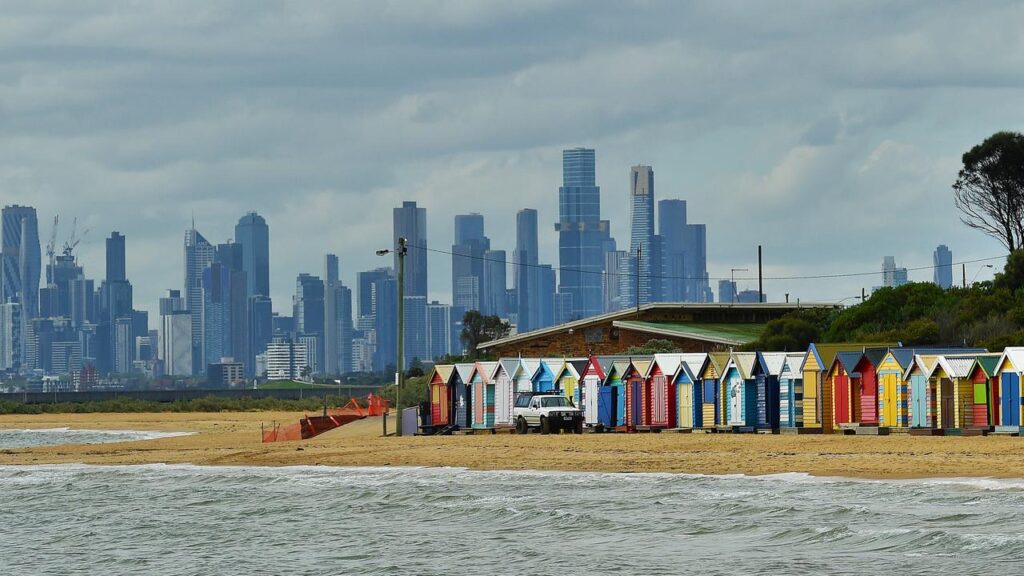Staggering figure revealed amid rental crisis
Written by admin on November 22, 2024
A couple needs a combined income of more than $200,000 to be able to afford to have a child and live comfortably as a renter in Greater Sydney or Greater Brisbane, new research shows.
Modelling by the National Shelter – SGS Economics and Planning groups shows how broken the current rental system is as it tracks various Australians in different life stages and their rental needs.
Such is the problem that even a well to do couple with a child making $219,000 combined are still finding rents less affordable since the pandemic.
Greater Sydney requires this household to spend just 18 per cent of their income on rent, leaving a reasonable amount for other living and parenting expenses, although it becomes cheaper if they move to the outer suburbs.
The problem only exacerbateds for low income or singles, with Australia’s captials widely seen as unaffordable.
National Shelter spokesperson John Engeler said renters across the country are under severe pressure as rent rises continue to outpace income growth amid historically low vacancy rates.
The Index highlights an increasingly dire situation.
For single jobseekers and part-time workers receiving a parenting payment, every city and rest of state area is now classed as severely unaffordable or worse.
While students living in a shared house, couples on the minimum wage and a single income couple with children will find most areas at least moderately unaffordable.
The report found tere is also nowhere affordable for pensioners and only regional South Australia is affordable for a single hospitality worker.
“The situation is especially serious for low-income renters who are increasingly forced to rent privately due to the declining availability of social and affordable housing,” Mr Engeler said.
“A single pensioner would have to spend 86 per cent of their income to rent a median one-bedroom apartment in Sydney.”
Mr Engeler said it was ‘clearly unacceptable’ and called on the government to help fix the affordability crisis through social housing.
In the past 12-months, rental affordability has declined 13 per cent in Perth, eight per cent in
Adelaide, six per cent in Melbourne, five per cent in Sydney, and four per cent in Brisbane.
Perth is now the least affordable capital city, with median weekly rent of $629 taking up 31 per cent of median income, closely followed by Sydney where median rent of $720 is 30 per cent of median income.
According to the report, 30 per cent is the cut-off for when rents become unaffordable.
Separate data from PropTrack’s Rental Affordability Report found that “Australia’s rental affordability is at its worst level on record”, with households earning the median income of $111,000 only being able to afford to rent the smallest share of properties since 2008 when records began.
Unlike mortgages, rents cannot be leveraged.
This means that rental growth is more closely tied to household incomes, limiting its potential increase.
Rental crisis becoming a national problem
The flow on impacts of unaffordable rents could become a national problem, with the higher costs including rents impacting the number of children families choose to have.
Australia’s falling birthrate could have significant ramifications for family dynamics and could see middle children become increasingly rare.
Figures released by the Australian Bureau of Statistics (ABS) in late October show the total fertility rate in 2023 dropped to a record low of 1.5 babies per woman.
Demographer Dr Liz Allen, a lecturer at the Australian National University, said gone are the days of middle children as couples having one or two children becomes the new norm.
She said this is due to it becoming increasingly difficult for couples to get ahead financially.
“Even renting has become unaffordable in some areas, and Allens says job insecurity has also become an issue, with many young people and women forced into casual or part-time employment,” she said.
The decrease in births can be attributed to the increased cost of living and current economic climate as this can impact the feasibility of younger Australians to have children, KPMG said.
Data revealed the birthrate across the country fell by 4.6 per cent over the last year, marking the 2023 birthrate the lowest it has been since 2006.
In 2023, 289,100 babies were born in Australia.
KPMG Urban Economist Terry Rawnsley explains that weak growth in the economy often leads to reduced birthrates, but that current cost-of-living pressures are having a particularly strong impact.
“Birthrates provide insight into long-term population growth as well as the current confidence of Australian families,” he said.
Sydney experienced the most notable decrease, with births dropping by 8.6 per cent. This was followed by Melbourne down by 7.3 per cent, Perth down 6.0 per cent and Brisbane down by 4.3 per cent.
Canberra was the only capital city to see no drop in births since 2019.
This rise has now rapidly declined as the current economic climate presents various challenges to Australian families.
“With the current rise in living expenses applying pressure on household finances, many Australians have decided to delay starting or expanding their families,” Rawnsley said.
“This combination of the pandemic and rapid economic changes explains the spike and subsequent sharp decline in birthrates we have observed over the past four years.”







